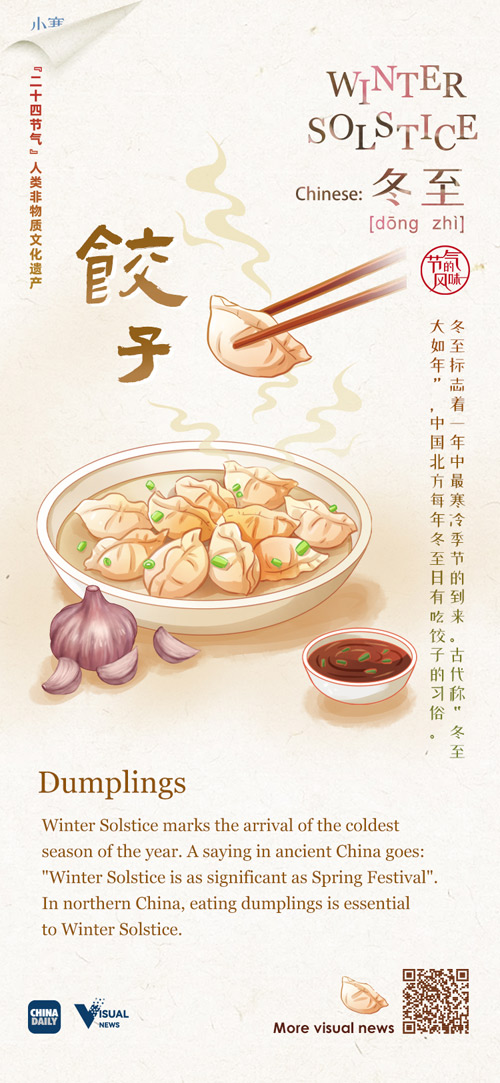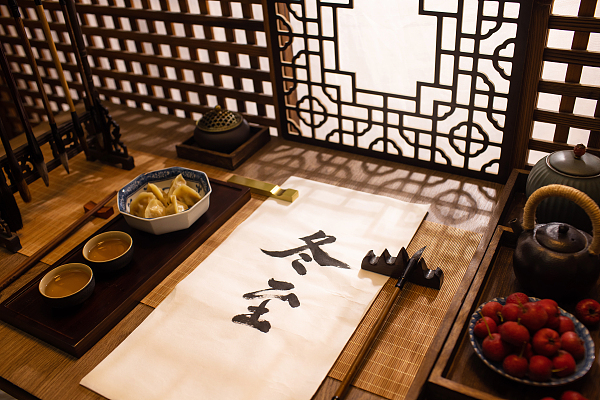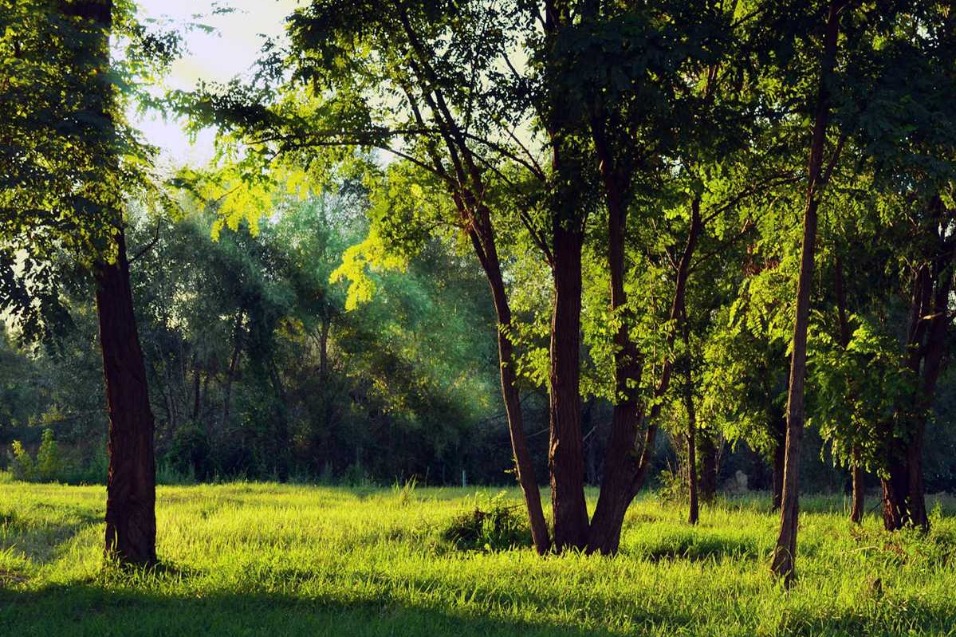冬至将至:别忘了吃这8种传统美食 24 Solar Terms: 8 foods to eat on Winter Solstice
中国日报网 2023-12-21 14:55


The traditional Chinese lunar calendar divides the year into 24 solar terms. Winter Solstice, the 22nd solar term of the year, begins this year on Dec 22 and ends on Jan 5.
中国传统二十四节气的第22个节气是冬至,今年的冬至从12月22日开始,1月5日结束。
On the first day of Winter Solstice, the Northern Hemisphere experiences the shortest day and the longest night in the year, as the sun shines directly at the Tropic of Capricorn. From then on, the days become longer and the nights become shorter. The Winter Solstice also marks the arrival of the coldest season in the year.
冬至节气的第一天,由于太阳直射南回归线,北半球白昼最短,黑夜最长。冬至过后,白昼变长,黑夜变短。冬至也意味着一年最冷的时节来临。
Here are nine things you should know about Winter Solstice.
一起来了解一下关于冬至的9个小常识。

The Winter Solstice Festival
冬至大如年
There was a saying in ancient China, "The Winter Solstice is as significant as the Spring Festival."
中国有句古话叫:“冬至大如年。”
As early as the Zhou Dynasty (c.11th century-256 BC), people worshipped the gods on the first day of the Winter Solstice, which also was the first day of the new year. The Winter Solstice became a winter festival during the Han Dynasty (206 BC-AD 220). The celebratory activities were officially organized. On this day, both officials and common people would have a rest.
早在周朝时期(公元前约11世纪-公元前256年),人们就在冬至这天祭拜神灵,冬至还是新年的第一天。冬至在汉朝(公元前206年-公元220年)成为一个冬季节日,在这天会举行正式的庆祝活动,官员和百姓均可休息。
During subsequent dynasties, such as the Tang (618-907), Song (960-1279) and Qing dynasties (1644-1911), the Winter Solstice was a day to offer sacrifices to Heaven and to ancestors.
在后来的朝代,比如唐朝(公元618年-907年)、宋朝(公元960年-1279年)和清朝(公元1644年-1911年),冬至成为祭天祭祖的节日。

















 英语点津微信
英语点津微信 双语小程序
双语小程序